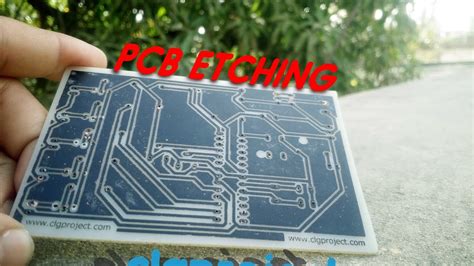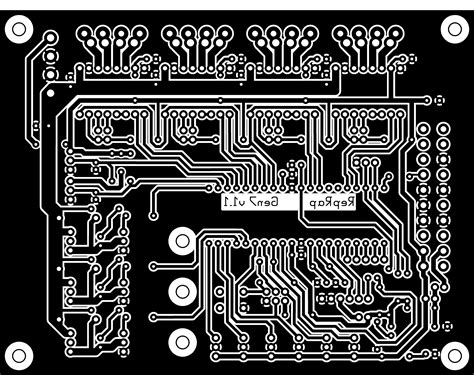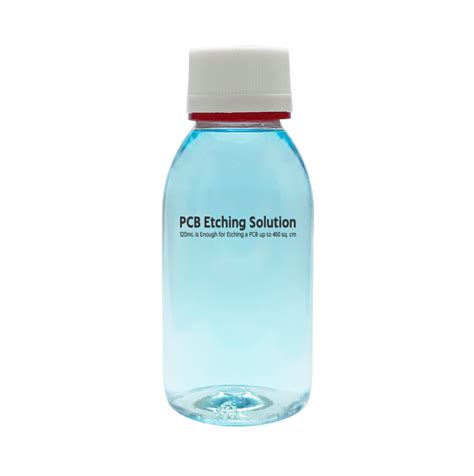What is PCB Etching?
PCB etching is the process of removing unwanted copper from a PCB using a chemical or physical process. The goal is to create a specific circuit pattern on the PCB that will allow electronic components to be soldered onto the board. PCB etching is an essential step in the manufacturing of electronic devices, as it ensures that the circuit pattern is accurate and reliable.
Wet Etching vs. Dry Etching
There are two main methods for PCB etching: wet etching and dry etching. Each method has its own advantages and disadvantages, and the choice of which method to use depends on several factors, including the desired circuit pattern, the materials used, and the production volume.
Wet Etching
Wet etching is the most common method for PCB etching. It involves submerging the PCB in a chemical solution that dissolves the unwanted copper. The chemical solution used for wet etching is typically an acid, such as ferric chloride or ammonium persulfate.
Advantages of Wet Etching
- Low cost: Wet etching is generally less expensive than dry etching, making it a popular choice for small to medium-sized production runs.
- Simple process: Wet etching is a relatively simple process that can be performed with basic equipment and minimal training.
- Versatile: Wet etching can be used with a wide range of PCB materials, including FR4, polyimide, and ceramic.
Disadvantages of Wet Etching
- Chemical disposal: The chemical solutions used in wet etching are hazardous and must be disposed of properly, which can be costly and time-consuming.
- Undercutting: Wet etching can result in undercutting, where the chemical solution etches away more copper than desired, resulting in a less precise circuit pattern.
- Slow process: Wet etching is a relatively slow process, especially for high-volume production runs.
Dry Etching
Dry etching, also known as plasma etching, uses a plasma to remove the unwanted copper from the PCB. The plasma is created by introducing a gas, such as oxygen or chlorine, into a vacuum chamber and applying a high-voltage electric field.
Advantages of Dry Etching
- Precise: Dry etching is a highly precise process that can create very fine circuit patterns with minimal undercutting.
- Fast: Dry etching is a much faster process than wet etching, making it ideal for high-volume production runs.
- Environmentally friendly: Dry etching does not use hazardous chemicals, making it a more environmentally friendly option than wet etching.
Disadvantages of Dry Etching
- High cost: Dry etching equipment is much more expensive than wet etching equipment, making it a less cost-effective option for small to medium-sized production runs.
- Limited materials: Dry etching is limited to certain PCB materials, such as FR4 and polyimide, and may not be suitable for other materials.
- Complex process: Dry etching is a more complex process than wet etching and requires specialized equipment and training.

Factors to Consider When Choosing a PCB Etching Method
When choosing between wet etching and dry etching for your PCB manufacturing needs, there are several factors to consider, including:
Circuit Pattern
The desired circuit pattern is one of the most important factors to consider when choosing a PCB etching method. If the circuit pattern is very fine and precise, dry etching may be the better option. However, if the circuit pattern is less complex and does not require high precision, wet etching may be sufficient.
Production Volume
The production volume is another important factor to consider. Wet etching is generally more cost-effective for small to medium-sized production runs, while dry etching is more efficient for high-volume production.
Material Compatibility
The PCB material is also an important consideration. Wet etching can be used with a wide range of materials, while dry etching is limited to certain materials. It is important to choose a method that is compatible with the PCB material being used.
Cost
Cost is always a consideration in any manufacturing process. Wet etching is generally less expensive than dry etching, but the cost of disposing of hazardous chemicals must also be taken into account. Dry etching equipment is much more expensive than wet etching equipment, but the faster processing times and higher precision may offset the initial cost over time.

Comparison of Wet and Dry Etching Methods
| Factor | Wet Etching | Dry Etching |
|---|---|---|
| Cost | Low | High |
| Precision | Moderate | High |
| Speed | Slow | Fast |
| Materials | Versatile | Limited |
| Environmental Impact | High | Low |
| Complexity | Simple | Complex |

FAQ
1. What is the difference between wet and dry etching?
Wet etching involves submerging the PCB in a chemical solution to dissolve the unwanted copper, while dry etching uses a plasma to remove the copper in a vacuum chamber.
2. Which method is more precise?
Dry etching is generally more precise than wet etching, as it can create very fine circuit patterns with minimal undercutting.
3. Which method is more environmentally friendly?
Dry etching is more environmentally friendly than wet etching, as it does not use hazardous chemicals that must be disposed of properly.
4. Which method is more cost-effective?
Wet etching is generally more cost-effective than dry etching, especially for small to medium-sized production runs. However, the cost of disposing of hazardous chemicals must also be taken into account.
5. Which method is faster?
Dry etching is much faster than wet etching, making it ideal for high-volume production runs.
Conclusion
Choosing the right PCB etching method is essential for creating accurate and reliable circuit patterns on PCBs. Wet etching and dry etching each have their own advantages and disadvantages, and the choice of which method to use depends on several factors, including the desired circuit pattern, the materials used, and the production volume. By considering these factors and weighing the pros and cons of each method, you can determine which PCB etching solution is the right choice for your manufacturing needs.

No responses yet